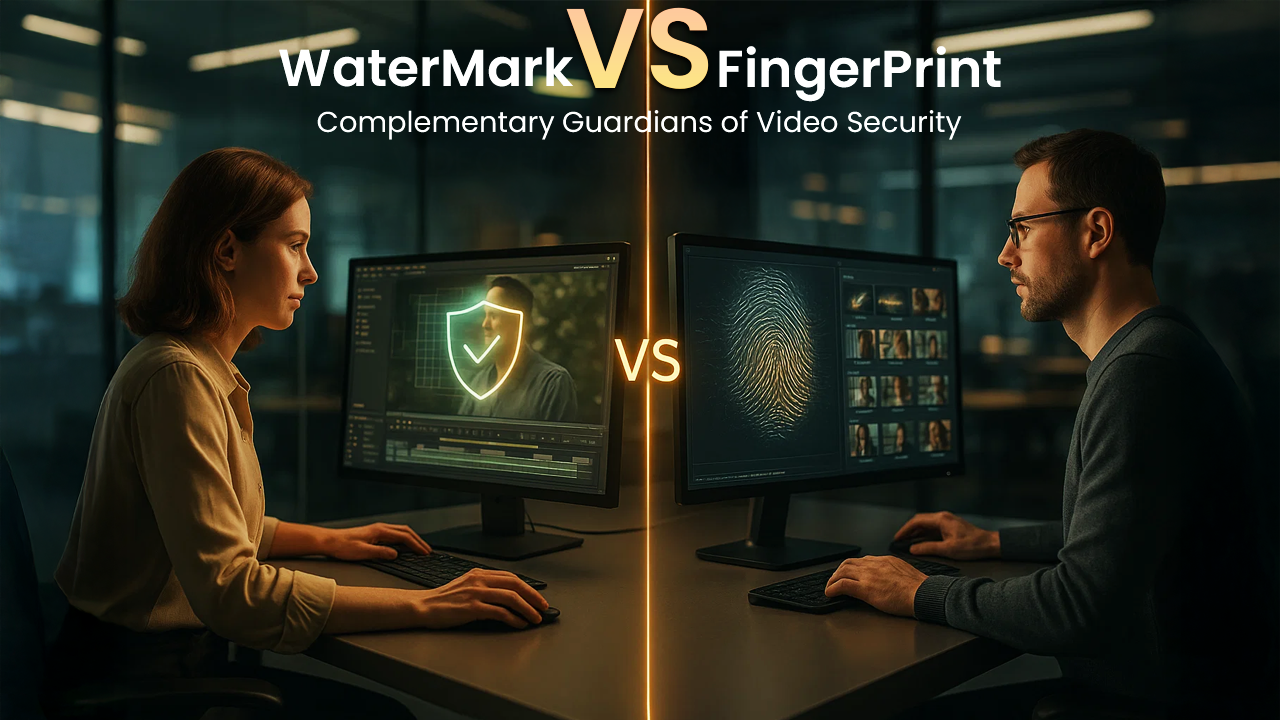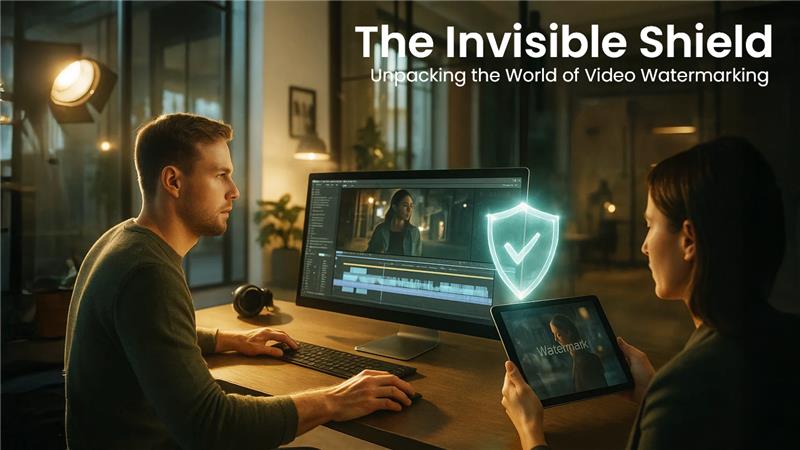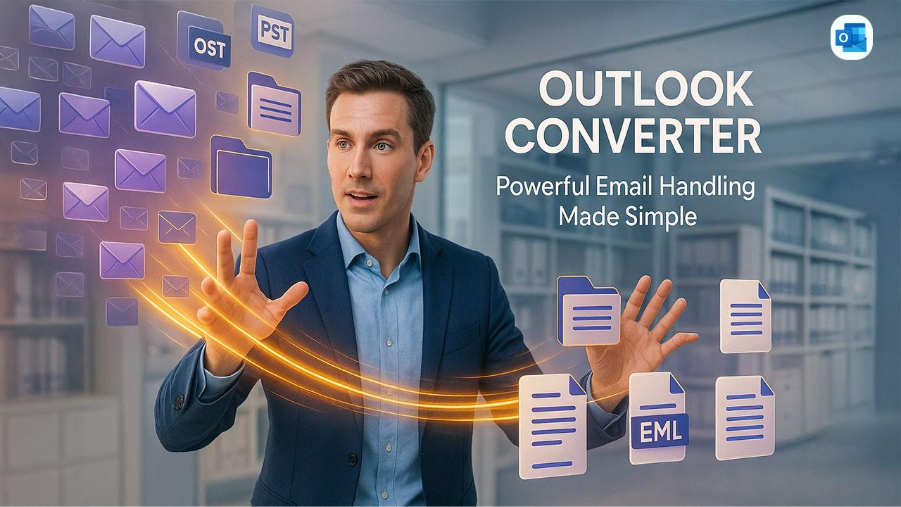In this large, ever-expanding digital landscape, a silent war is being waged against unauthorized distribution, piracy, and intellectual property theft. At the center of this battle lies a sophisticated and often invisible technology that injects a unique mark directly into the fabric of a video itself. This technique is known as video watermarking. It has evolved from simple on-screen logos into a complicated set of digital tools built for everything from brand promotion to forensic investigation. Today, a wide range of specialized video watermarking software enables creators, broadcasters, and streaming platforms to exercise control over their valuable assets, ensuring their work is seen, respected, and protected in a world where duplicity is as easy as a click.
Beyond the Logo: The Two Sides of Watermarking
The initial impression of a video watermark leaves a picture with a semi-transparent logo or a channel name in the corner of a YouTube video. This is called a visible watermark, and its fundamental function is branding and a basic barrier against casual theft. However, the real strength of modern video watermarking lies in its invisible counterpart. Invisible or forensic watermarking places a unique, imperceptible code directly into the file or video stream. This code is not visible on surface, but a slight modification of the video pixel data or audio frequencies, built to be unnoticeable to the naked eye or ear yet easily comprehensible by specialized software.
This distinction is crucial. While a visible watermark announces ownership, an invisible one provides a secret, unbreakable link back to the source of a leak. This provides a base for forensic watermarking video technology. It is a critical tool designed for high-stakes content protection.
The Forensic Edge: Tracking the Leak Source
For protecting premium and pre-release content, forensic watermarking video is the gold standard. Suppose a big studio sending a screener of its upcoming blockbuster to a selected group of critics or awards committees. To prevent a catastrophic leak, each copy of the video is inserted with a unique, hidden forensic watermark that is tied to the specific recipient. If that screener is abruptly released on a pirate site, the studio can trace the watermark from the illicit copy that allows to identify the exact person who was responsible for the breach.
This capability fuels the transformation of watermarking from a passive shield to an active investigative tool. It’s not just about knowing that your content was stolen; it’s about knowing precisely who stole it. This creates a powerful psychological defense, as potential leakers fear that they can be held responsible. Leading services and solutions for video forensic protection are now essential for global OTT platforms, production studios, and pay-TV operators who handle valuable, high-risk video content.
A Spectrum of Protection: From Static to Dynamic
The sophistication of watermarking technology continues to advance. Conventional methods often used a static watermark. It is a single, unchanging code embedded throughout the entire video. While it’s effective, a committed attacker could potentially identify and eliminate a static signal. The next generation involves dynamic watermarking. In a dynamic system, the embedded code keeps changing over time, perhaps every few seconds or minutes. This makes it exponentially harder to remove or corrupt the watermark without destroying the video itself, as an attacker would need to successfully neutralize a constantly shifting signal.
Additionally, modern digital video watermarking is designed to show more resilience. A robust watermark can survive common video processing operations that would destroy a simple file hash or a basic fingerprint. This includes format conversion, compression (like going from 4K to 1080p), cropping, color correction, and even the addition of another visible watermark on top of it. This resilience makes sure that the invisible mark remains intact and detectable, no matter how the video is modified to disguise its origin.
Video Watermarking vs. Video Fingerprinting: Complementary Guardians

It is easy to mix up video watermarking with closely related video fingerprint technology. They both share the overarching goal of protecting content, but essentially, they are distinct in their methods and purpose. To differentiate, watermarking is an active process. It deliberately alters the original video by embedding it with new information. On the other hand, fingerprinting is a passive process. It examines the existing content to generate a unique signature or “fingerprint video” based on its innate features, without changing the source file at all.
In practice, these technologies are often grouped together as a holistic solution for securing video. Fingerprinting is excellent for scanning vast libraries of content (like on YouTube) to find matches of known copyrighted material. Watermarking, particularly forensic one, is best for tracking a certain source of a leak from a controlled distribution channel. Each playing to its own strengths, they are two sides of the same security coin.
Selecting the Right Tool for the Job
The diverse market for video watermarking tools ranges from easy, user-friendly applications for individual creators to enterprise-level platforms for global media companies. For a small business looking to add a logo to its marketing videos, low-cost or free tools such as Wondershare Filmora or Format Factory might be enough. These are good entry-level software choices for basic branding.
However, for organizations that need the highest level of protection for their premium content, the choice is far more critical. The best video watermarking software in this space is assessed based on its imperceptibility, robustness against attacks, embedding speed and detection, and the sophistication of its forensic competence. Since content creation may begin with the AI-powered text-to-video generator tools, the security layer continues with expert watermarking platforms such as PallyCon, Verimatrix, or NexGuard. Together, these tools become leading ones that provide advanced, secure services to form the backbone of anti-piracy strategies for the world’s largest content owners.
The Hidden Architecture of Trust
In this digital landscape, trust is a rare commodity; video watermarking ensures an unseen architecture of accountability and security. It moves beyond simple copyright notices to create an intelligent, embedded system of digital provenance. This technology offers a versatile and powerful set of tools for every purpose; whether to protect movies from leaking, to verify the authenticity of a citizen’s footage, or to stream giant safeguarding a billion-dollar library. More than just a technical feature, it is a building block in the digital media ecosystem, making sure that in a world of unlimited copies, the original source and its rightful owner can always be traced. As it turns out, the invisible mark speaks volumes.



